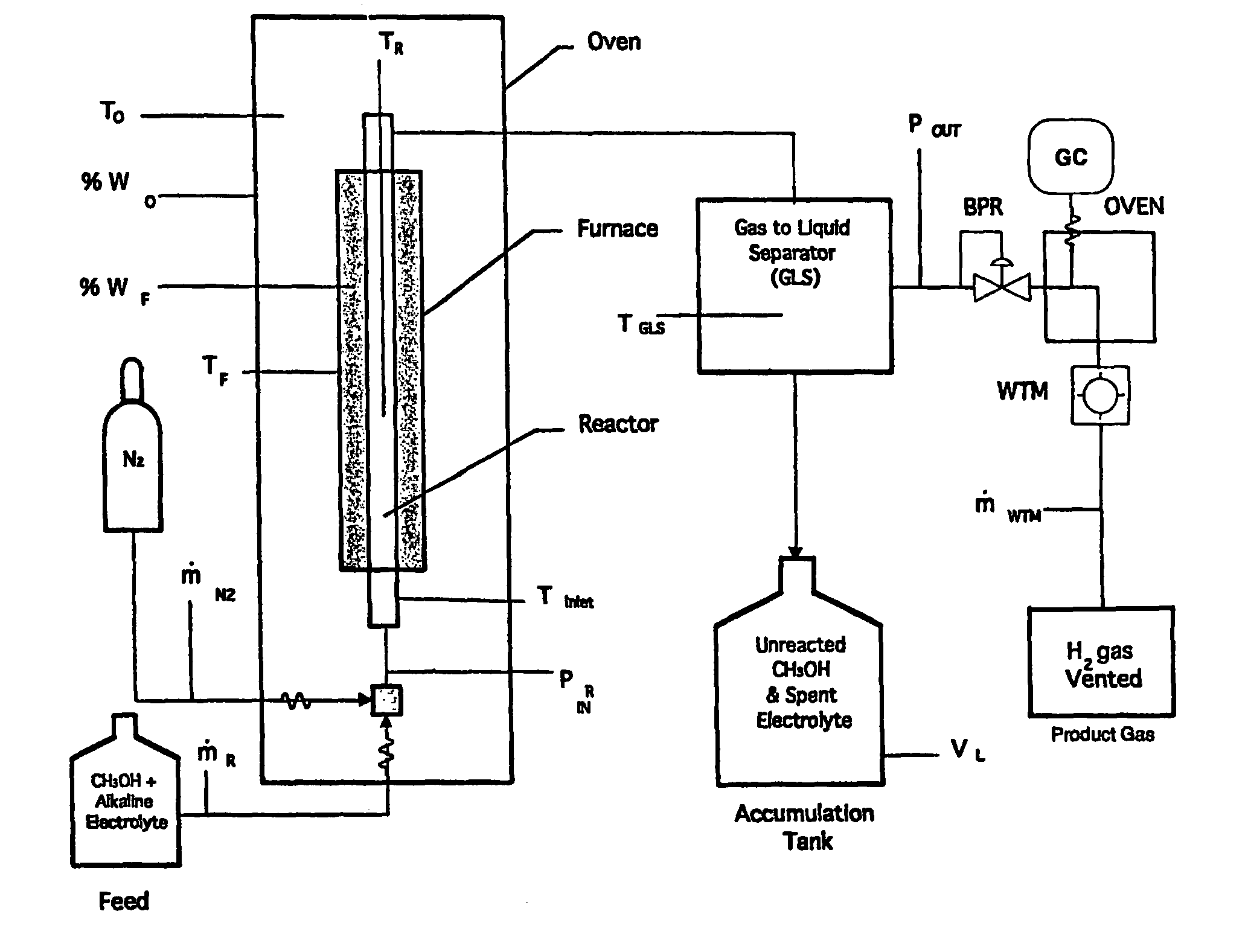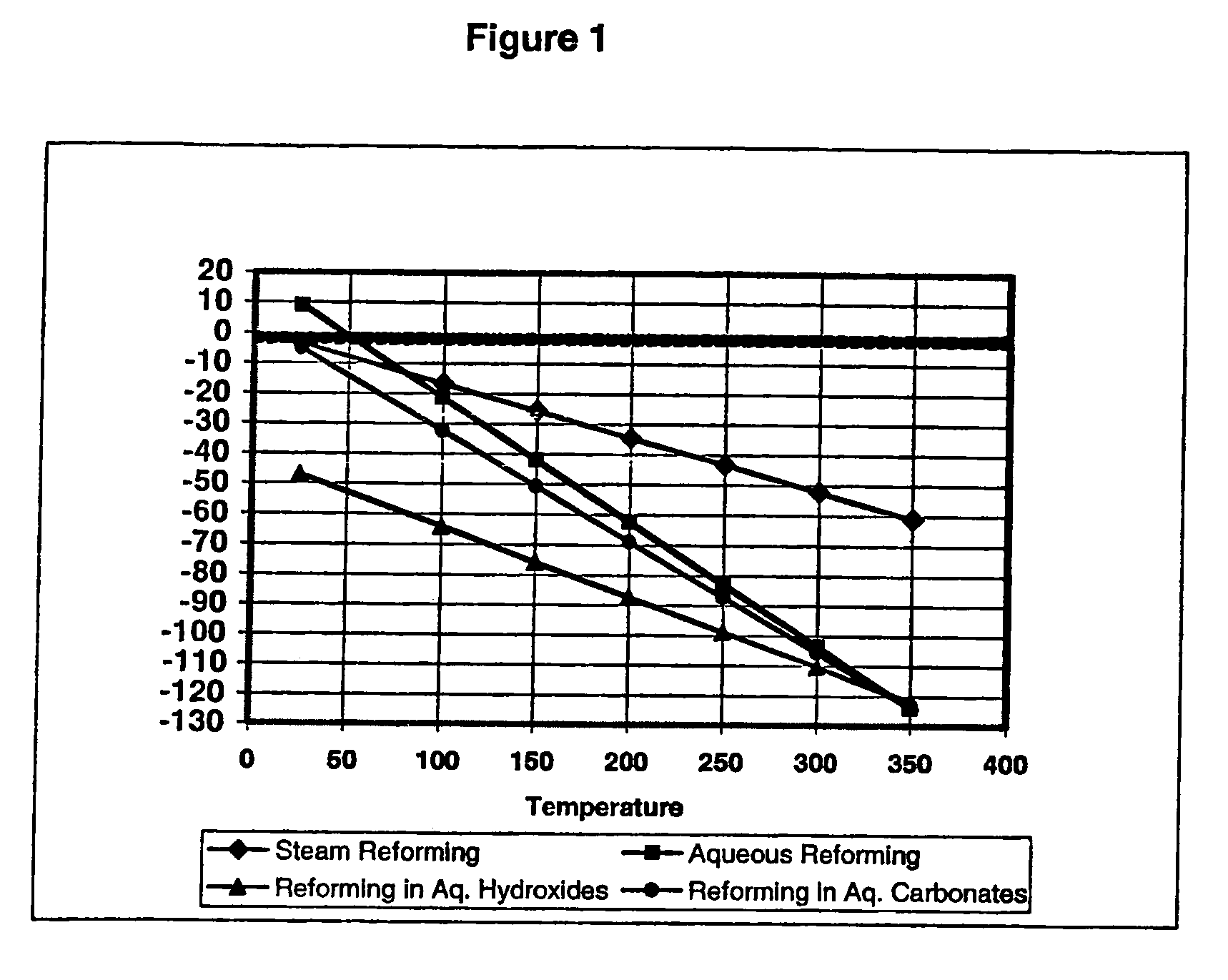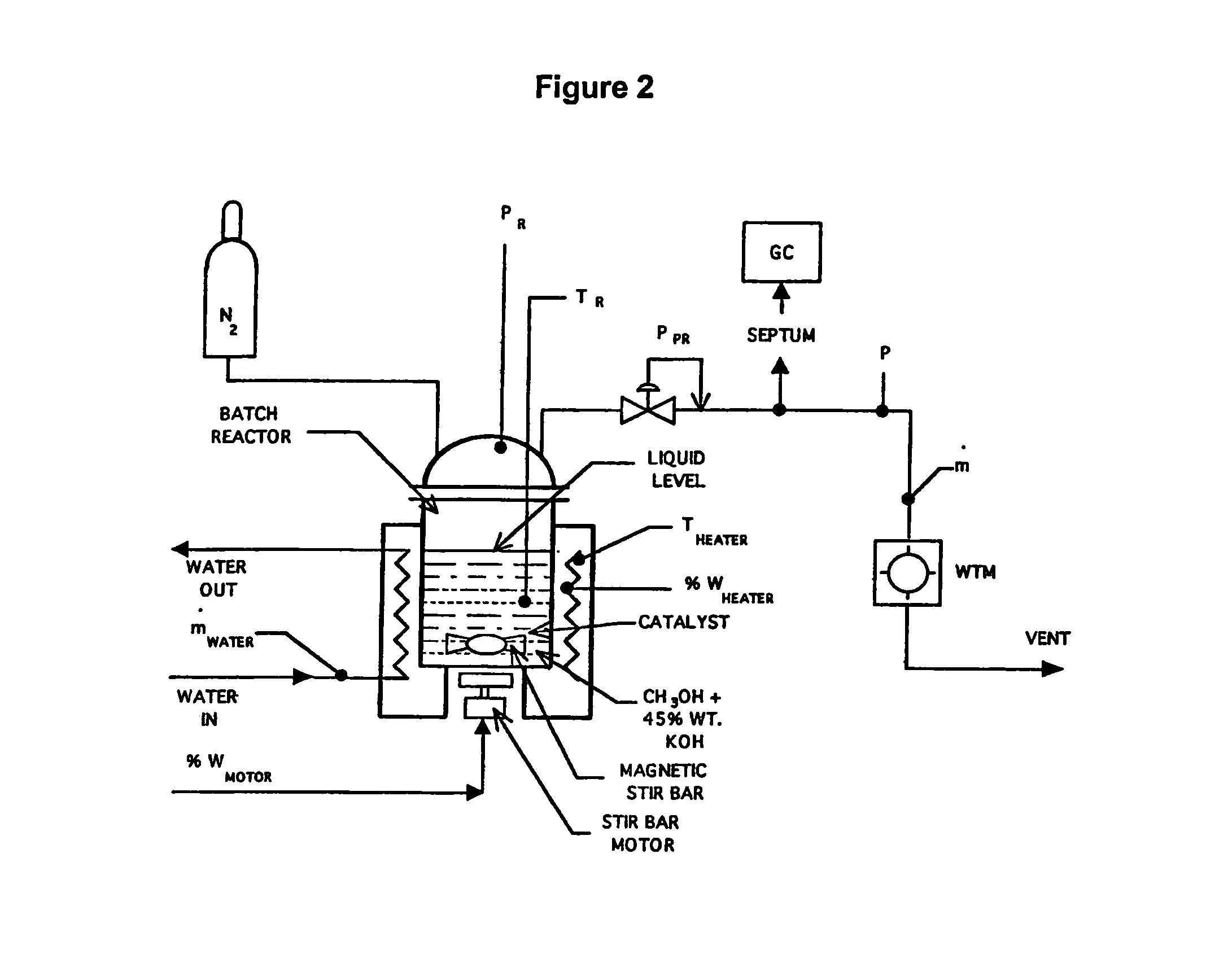Hydrogen production using electrochemical reforming and electrolyte regeneration
a technology of electrochemical reforming and hydrogen gas, applied in the direction of electrolytic organic production, chemical/physical/physicochemical processes, petrochemical industries, etc., can solve the problems of slow kinetics of methane steam reforming, limited supply of domestic natural gas, and increased pri
- Summary
- Abstract
- Description
- Claims
- Application Information
AI Technical Summary
Benefits of technology
Problems solved by technology
Method used
Image
Examples
example 1
[0066]Catalysts for liquid phase reforming in caustic electrolytes were experimentally evaluated in a test stand shown schematically in FIG. 2. Mixtures of methanol, aqueous caustic electrolytes and catalysts were initially charged into a reaction vessel and then sealed. The vessel was then heated to reaction temperatures between 150° C.-250° C. Kinetics were measured as a pressure build-up caused by evolved hydrogen. Gas chromatography (GC) analysis of the product gases using potassium hydroxide typically showed high purity hydrogen with only trace amounts (less than 1000 ppm) of carbon monoxide, carbon dioxide or methane. A wet test meter (WTM) was used to monitor the amount of hydrogen gas evolved.
[0067]A series of conductive metallic catalysts were evaluated using the test stand shown schematically in FIG. 2. FIG. 7 compares the activity from these catalyst evaluations. The results are presented as hydrogen pressure increase after the reactor was heated to a steady state tempera...
example 2
[0069]A series of experiments are described which illustrate significant features or steps of the invention. These steps are common to the process integrations described in the application, particularly in FIGS. 4, 5 and 6. These tests were conducted in the form of batch experiments for demonstration purposes. Furthermore, in view of the comprehensive teachings provided herein, they can be integrated to form a continuous, multi-step process.
[0070]The steps are described as follows:
[0071]Step A: Generation of hydrogen from a fuel, in this instance methanol was used, in a liquid composition at a pH between 10.5 and ≦12, producing a bicarbonate-rich electrolyte, in other words a solution in which the reforming reaction proceeds via an electrochemical pathway, an ion-conducting electrolyte, thereby lowering its pH to a range between 8 and 10.5. In this step, a substantial portion, but not all of the carbonate is converted to bicarbonate;
[0072]Step B: Using steam to substantially regener...
example 3
[0084]The series of experiments described in Example 2 were repeated using a Ni catalyst (spherical nickel powder, commercially available as Novamet® Type 4SP-10, from Inco Special Products, Inco Limited, Wyckoff, N.J.). The results were substantially similar to those reported in Example 2. Hydrogen was again generated in Step A and Step C. Nickel is a less active catalyst than platinum and as a result the amount of catalyst was increased from 3 g to 104 g. In spite of its slower kinetics, nickel is about 1000 times less expensive than platinum per unit weight and thus nickel may be a more cost-effective catalyst. In Step A the pH decreased from 10.95 to 10.54. In Step B, the electrolyte (which contained a nickel slurry and was difficult to separate by decantation), was steam stripped until the final pH increased from 10.54 to 11.14. In Step C, the regenerated electrolyte was again recharged with fresh methanol. The hydrogen generation returned to the initial rate observed in Step A...
PUM
| Property | Measurement | Unit |
|---|---|---|
| temperatures | aaaaa | aaaaa |
| temperatures | aaaaa | aaaaa |
| concentrations | aaaaa | aaaaa |
Abstract
Description
Claims
Application Information
 Login to View More
Login to View More - R&D
- Intellectual Property
- Life Sciences
- Materials
- Tech Scout
- Unparalleled Data Quality
- Higher Quality Content
- 60% Fewer Hallucinations
Browse by: Latest US Patents, China's latest patents, Technical Efficacy Thesaurus, Application Domain, Technology Topic, Popular Technical Reports.
© 2025 PatSnap. All rights reserved.Legal|Privacy policy|Modern Slavery Act Transparency Statement|Sitemap|About US| Contact US: help@patsnap.com



